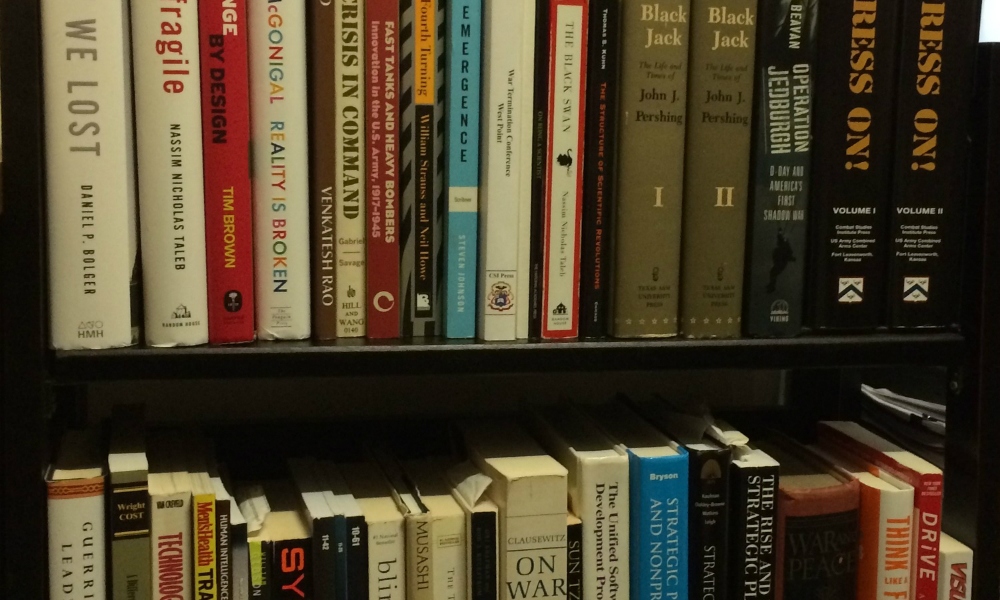Top Five Books
Col. John Boyd, A Discourse on Winning and Losing
Easily the work that most transformed my thinking about military operations; much more than just the OODA (Observe-Orient-Decide-Act) Loop.
Carl von Clausewitz, On War
This classic introduced me to the importance and role of theory in understanding war and military operations.
Col. Dandridge (Mike) Malone, Small Unit Leadership
This is still the best book on small unit leadership I have read and it was written after Vietnam.
Richard Gabriel and Paul Savage, Crisis in Command
We talk often about “toxic leadership.” This book was instrumental in correcting the toxic leadership that emerged as a result of the Vietnam War.
Venkatesch Rao, Tempo
This work develops an understanding that there are no decision points, but rather narrative decision-making processes; this is a lesson necessary for every leader to understand.
The One That Shaped Me The Most
Col. Boyd’s A Discourse on Winning and Losing shaped me in so many ways. I was lucky in that I heard Col. Boyd present his famous Patterns of Conflict pitch. His work is much more than the OODA Loop for which he is known; it is a systemic approach to understanding and engaging in combat and military operations in order to accomplish the ends of strategy. I was shaped also by the depth of his research, signaling to me that I must learn and grow even while engaged in my day-to-day military missions. His integration of theory, history, and practice led me to seek out SAMS in order to master my profession. And lastly, many of the successful decisions I made in combat and other operations, to include concepts and leader development, were shaped by what I learned from Boyd. Best of all, his book is available online.

